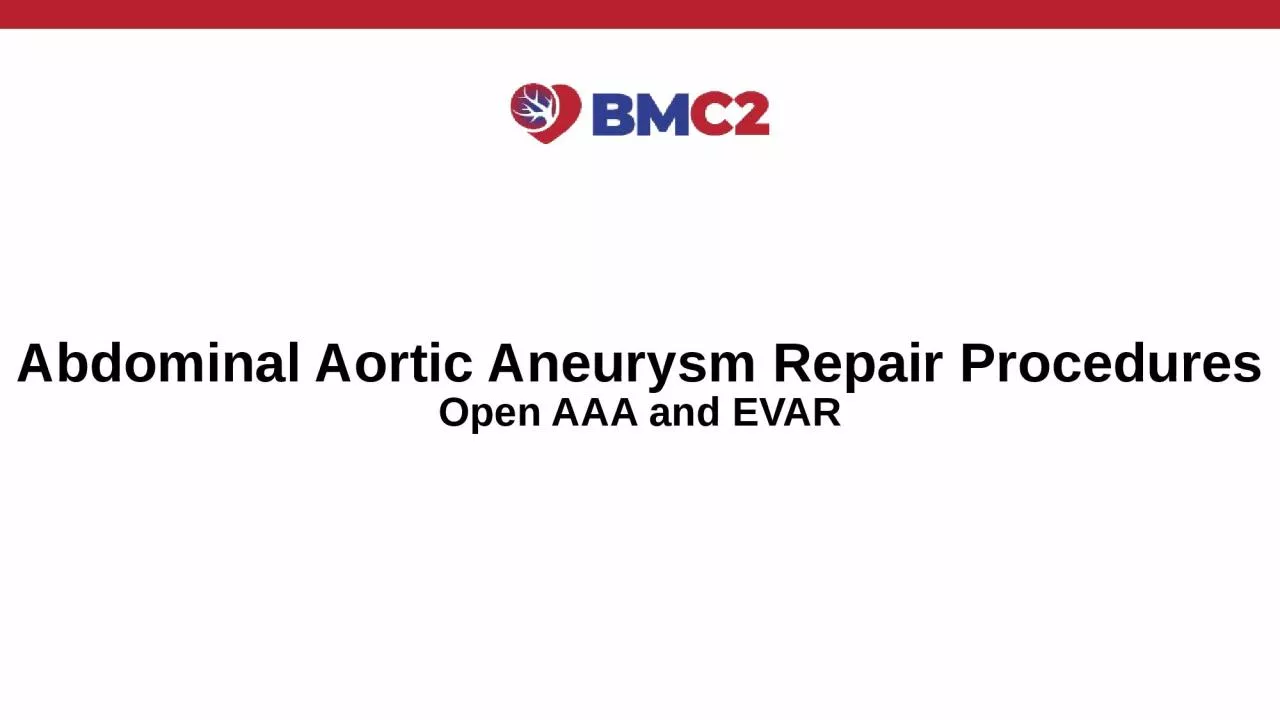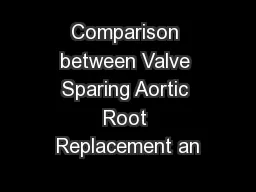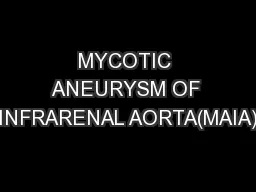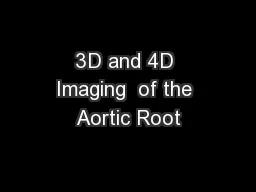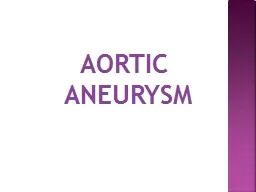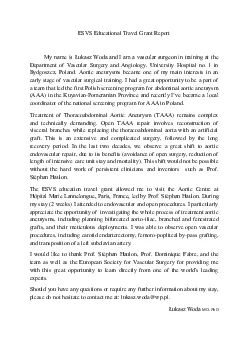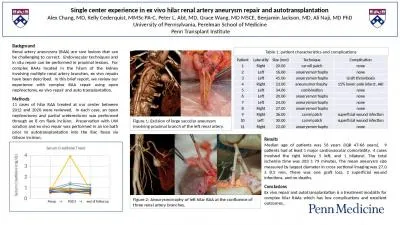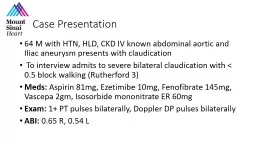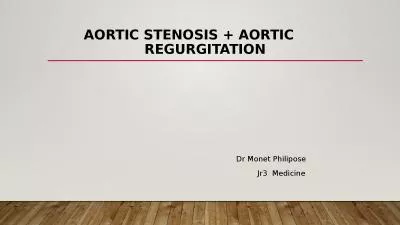PPT-Abdominal Aortic Aneurysm Repair Procedures
Author : sophie | Published Date : 2023-11-15
Open AAA and EVAR Indications for AAA Repair Increase in size to 15 normal size or gt 5 cm for women gt 55 cm for men Increase in size of 05 to 1 cm in 6
Presentation Embed Code
Download Presentation
Download Presentation The PPT/PDF document "Abdominal Aortic Aneurysm Repair Procedu..." is the property of its rightful owner. Permission is granted to download and print the materials on this website for personal, non-commercial use only, and to display it on your personal computer provided you do not modify the materials and that you retain all copyright notices contained in the materials. By downloading content from our website, you accept the terms of this agreement.
Abdominal Aortic Aneurysm Repair Procedures: Transcript
Download Rules Of Document
"Abdominal Aortic Aneurysm Repair Procedures"The content belongs to its owner. You may download and print it for personal use, without modification, and keep all copyright notices. By downloading, you agree to these terms.
Related Documents

